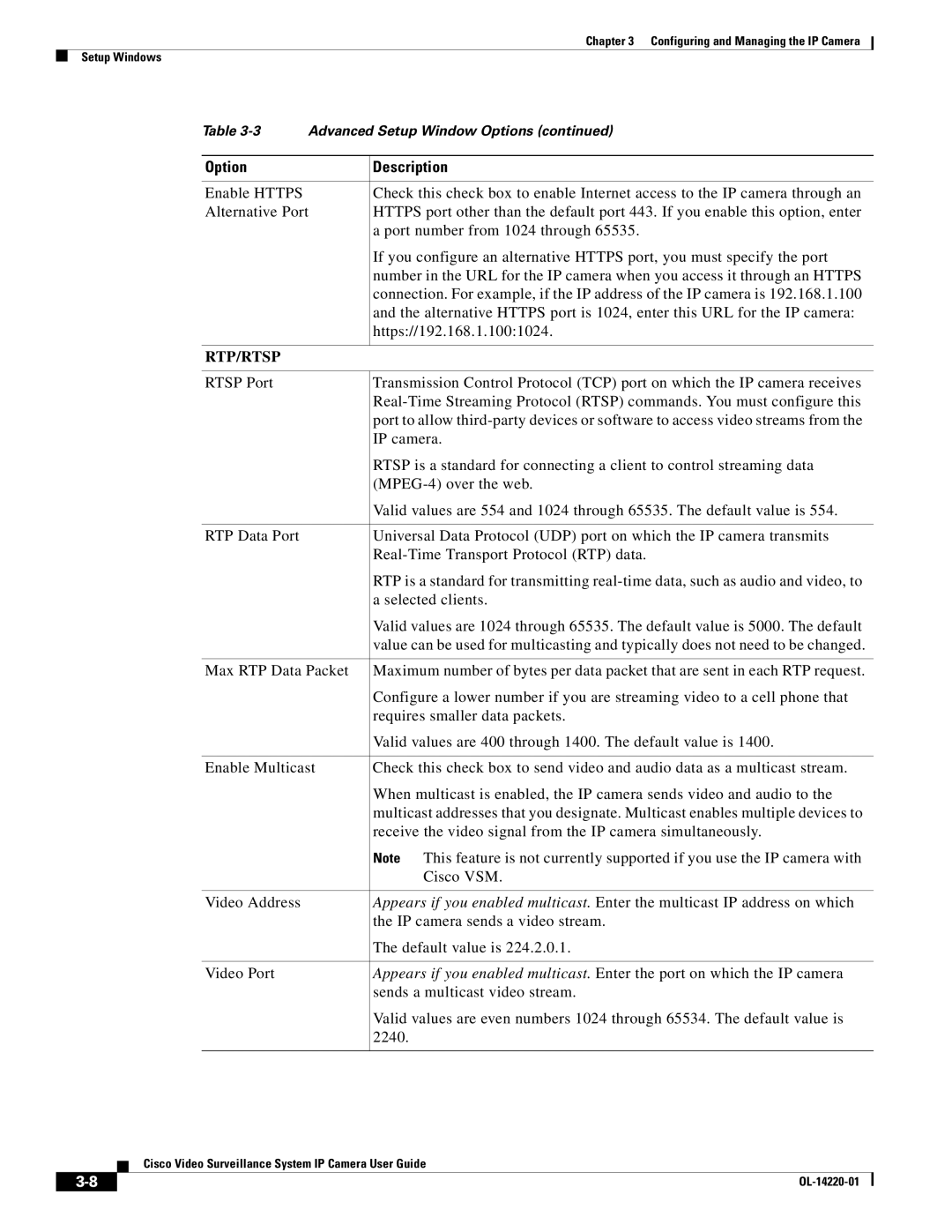
Chapter 3 Configuring and Managing the IP Camera
Setup Windows
Table | Advanced Setup Window Options (continued) | |
|
|
|
Option |
| Description |
|
|
|
Enable HTTPS |
| Check this check box to enable Internet access to the IP camera through an |
Alternative Port | HTTPS port other than the default port 443. If you enable this option, enter | |
|
| a port number from 1024 through 65535. |
|
| If you configure an alternative HTTPS port, you must specify the port |
|
| number in the URL for the IP camera when you access it through an HTTPS |
|
| connection. For example, if the IP address of the IP camera is 192.168.1.100 |
|
| and the alternative HTTPS port is 1024, enter this URL for the IP camera: |
|
| https://192.168.1.100:1024. |
|
|
|
RTP/RTSP |
|
|
|
|
|
RTSP Port |
| Transmission Control Protocol (TCP) port on which the IP camera receives |
|
| |
|
| port to allow |
|
| IP camera. |
|
| RTSP is a standard for connecting a client to control streaming data |
|
| |
|
| Valid values are 554 and 1024 through 65535. The default value is 554. |
|
|
|
RTP Data Port |
| Universal Data Protocol (UDP) port on which the IP camera transmits |
|
| |
|
| RTP is a standard for transmitting |
|
| a selected clients. |
|
| Valid values are 1024 through 65535. The default value is 5000. The default |
|
| value can be used for multicasting and typically does not need to be changed. |
|
| |
Max RTP Data Packet | Maximum number of bytes per data packet that are sent in each RTP request. | |
|
| Configure a lower number if you are streaming video to a cell phone that |
|
| requires smaller data packets. |
|
| Valid values are 400 through 1400. The default value is 1400. |
|
| |
Enable Multicast | Check this check box to send video and audio data as a multicast stream. | |
|
| When multicast is enabled, the IP camera sends video and audio to the |
|
| multicast addresses that you designate. Multicast enables multiple devices to |
|
| receive the video signal from the IP camera simultaneously. |
|
| Note This feature is not currently supported if you use the IP camera with |
|
| Cisco VSM. |
|
|
|
Video Address |
| Appears if you enabled multicast. Enter the multicast IP address on which |
|
| the IP camera sends a video stream. |
|
| The default value is 224.2.0.1. |
|
|
|
Video Port |
| Appears if you enabled multicast. Enter the port on which the IP camera |
|
| sends a multicast video stream. |
|
| Valid values are even numbers 1024 through 65534. The default value is |
|
| 2240. |
|
|
|
Cisco Video Surveillance System IP Camera User Guide
| ||
|
